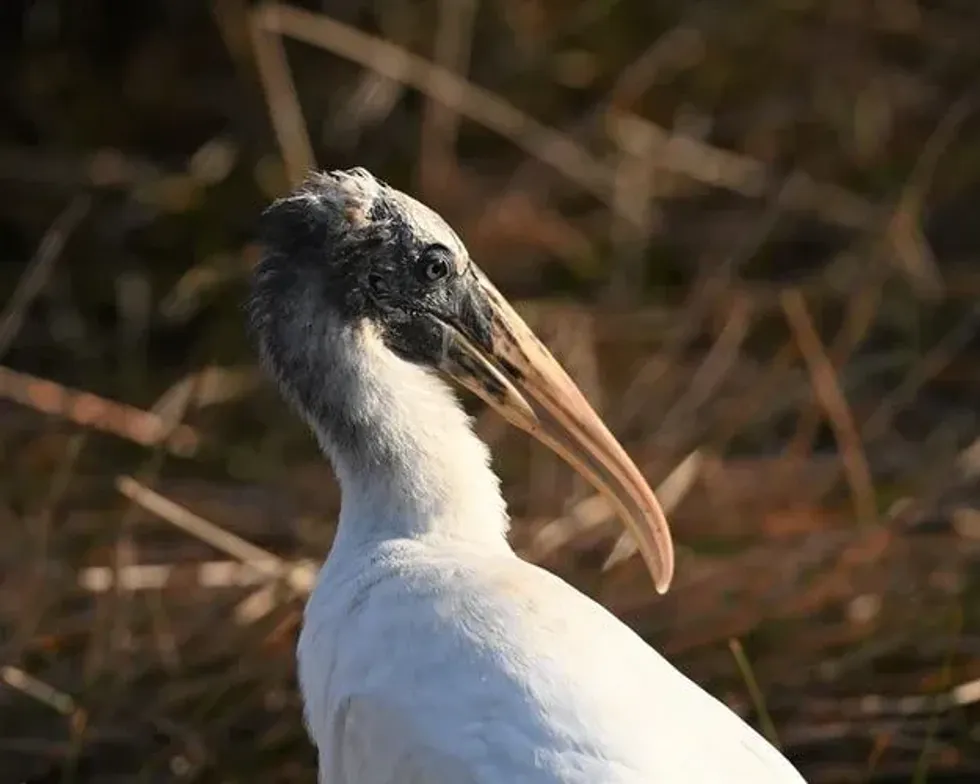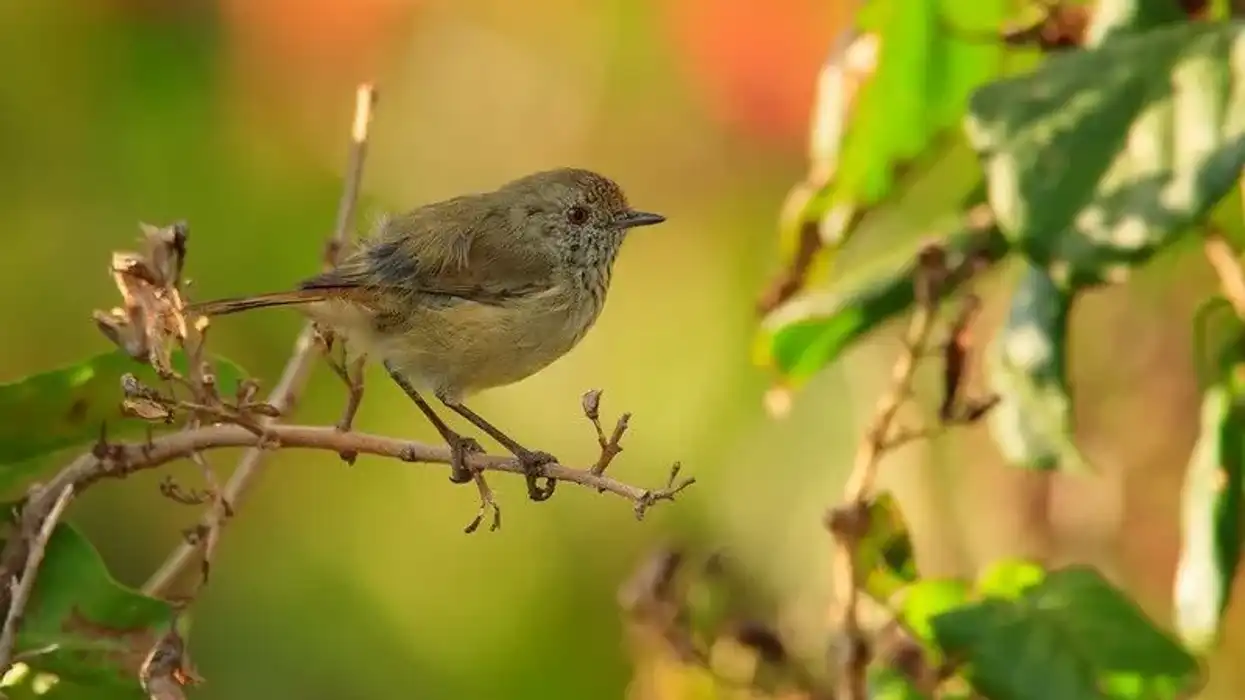The Wood Stork (Mycteria americana) is a species of storks, that can be found all over North America, and recently, has expanded its range north to South Carolina. The population of these birds in the southeastern United States was once reported to be over 150,000 but by the early 1990s, it decreased to 10,000.
The juveniles can be distinguished from the adults as juveniles have a yellow bill and feathered head, compared to the black bill and featherless head of the adults.
Due to a loss of habitat caused by human interference, their population has dwindled and in 2014, they were downlisted from Endangered to Threatened in North America. This increase reflects a successful conservation effort of over three decades.
If you liked these true facts about Wood Stork, then you'll surely like these facts about the wandering albatross and the tawny owl too!
Wood Stork Interesting Facts
What type of animal is a wood stork?
Wood storks are a heavy-wading bird species native to North America. They have a body that is football-shaped in nature and is supported by their long legs.
These birds have a long neck and a bill that is thick and curved at the tip. When in flight, the wood stork stretches out their neck and legs, but draws in their neck when perching, giving them a unique humpbacked appearance.
What class of animal does a wood stork belong to?
The wood stork (Mycteria americana), a species of North American birds, belongs to the Aves Class of the Animalia Kingdom.
Aves class consists mostly of birds. Birds are vertebrates that have feathers and can fly or be flightless. Forelimbs in this class have been modified as wings for flight and they lack teeth in their mouth.
How many wood storks are there in the world?
The current population of these North American birds can be difficult to estimate as they are not known to nest each year. Currently, the breeding population of adult wood storks is estimated to be around 16,000 individuals.
Nesting during the breeding season has been limited to South Carolina, Georgia and older generations might have bred in the southeastern United States, Texas, and other regions of North America.
Where does a wood stork live?
Wood storks can be found in and around shallow water bodies like marshes and swamps. They hunt in low water levels for fish and other aquatic creatures.
What is a wood stork's habitat?
The wood stork is a freshwater and wetland dweller. They are found abundantly in and around wetlands and shallow water bodies like swamps, marshes, streams, and mangroves. The concentration of fish in these areas increases during periods of falling water levels and they prey on these fish and other marine creatures.
They make their nest above cypress and mangrove trees and create a habitat in these areas.
Who do wood storks live with?
Wood storks are found in flocks when they are foraging outside their breeding season. And during the breeding seasons, the majority of the population of these birds nest and prey on fish in groups during feeding time.
How long does a wood stork live?
The wood stork range of lifespan cannot be given to the accuracy of an exact number due to data deficiency surrounding this bird's status.
It is, however, generally believed that wood storks can live up to 11-18 years in their general habitat in the wild and the oldest wood stork adult lived to be 27 years and six days old in captivity under careful conservation and a favorable habitat.
How do they reproduce?
Both sexes of adult wood storks reach sexual maturity by the age of four years old. Wood stork pairs often mate for life and will return to the same habitat each season of breeding where they previously made their nests to raise their young.
Nests are usually made on the top of cypress trees around cypress swamps. The breeding population comes together during the breeding season which lasts from December to April.
The wood stork makes a nest in colonies and up to 25 nests can be found in a single tree around wetlands and cypress swamps.
Females lay an average of two to five eggs per clutch and the incubation period ranges from 28-32 days and it takes 55-60 days for the young to fledge and this young, juvenile wood stork is dependent on their parents for this fledging period for feeding.
What is their conservation status?
As of now, the IUCN Red List recognizes Wood Stork as a species of Least Concern. However, in 1978, only 2500 pairs of these species were recorded in comparison to 20,000 recorded during the 1930s. The population of the wood stork is listed as Endangered or Threatened on the US Federal List and as such they are protected.
The population decrease of these birds is caused due to a decline in habitat and poor water management, mostly caused by human interference.
An increase in the population of these species of birds to 6,000 pairs will change their conservation status from Threatened to Endangered.
Wood Stork Fun Facts
What do wood storks look like?

Wood storks have a bill that is blackish in nature and is accompanied by a scaly, featherless head and neck which sticks out when they are in flight. These birds are white in color, excluding their tail feathers which are black. They have long legs which makes them look like hunchbacked birds!
How cute are they?
It would be a stretch to call these birds cute as their black bill and featherless head make them look hideous in nature, hideous might be a bit too much but one thing is for sure, they are not good-looking!
How do they communicate?
Wood Storks like most of the species of storks lack a syrinx, a vocal organ, and so, are mute in nature and clatter their bills against each other as a mode of communication in their colonies and nests.
How big is a wood stork?
Wood storks have a large body and even larger legs! They can grow an average of 3 feet in length. This bird, much like the flamingo can be easily differentiated from others due to its long legs.
How fast can a wood stork fly?
This bird is known to average a speed of 15.2 mph (24.4 kph). Their speed increases when they flap their wings and they can reach a speed of 21.4 mph (34.4 kph). They have a gliding speed of 12 mph (19.3 kph).
How much does a wood stork weigh?
Wood storks reach an average weight of 5.5–7.3 lb (2.5 -3.3 kg) and males are larger than the females as these birds of North America are sexually dimorphic in nature and thus wood stork size differs from male to female.
What are their male and female names of the species?
No specific name has been assigned to either sex of these bird species.
What would you call a baby wood stork?
The term 'chicks' is used to refer to a wood stork baby.
In some cases, the parent wood stork kills their weak, small chicks to get through a shortage of food and in turn, increases the survival chances of the healthier chicks in their colonies.
Immature wood storks can be differentiated from the adults due to their bill that is pale-yellow in color and feeding duty for babies falls on the parents.
What do they eat?
The wood stork diet consists mainly of fish that are around six inches in size. Other things that they eat are frogs, insects, mice, and crayfish.
Are they aggressive?
Wood stork species are not aggressive towards humans, but they will show fierce aggression towards trespassers who tread in their territory or approach their nests.
Would they make a good pet?
It is illegal to keep them as pets as they are listed as threatened in many parts of North and South America, even in the wild you are not supposed to feed them.
Did you know...
Storks are revered in Chinese, European, and Greek mythologies as a good luck charm, and also the wood stork spiritual meaning symbolizes rebirth or the beginning of a new life.
Wood stork babies that are weak might often be killed by their parents to make sure the stronger ones survive.
Wood storks (Mycteria Americana), alongside other wading birds, play an integral part in the food chain of marshlands as they prey on fish and other marine animals and keep their population in check.
In German and Austrian folklore, storks were said to deliver babies to new parents.
The Florida wood stork is the signature bird of Florida, and the conservation of these birds all over North America is at an all-time high.
Wood stork migration depends on the availability of food sources, as a lack of food might force these birds to seek new pastures.
Wood stork adaptations have worked in their favor as they can hunt and escape predators easily.
In case you find a wood stork, please do not feed it anything! Human food can be harmful to them.
The wood stork is a specialist species as it prefers tropical and subtropical habitats.
Even if they pester you, you cannot do anything to prevent them from eating fish.
These birds are listed as endangered in Georgia, South Carolina, Florida, and Alabama.
How high do wood storks fly?
Much like their close relatives, the vultures, these storks are known to fly at high altitudes and can be found up to 300 meters from land.
They can be found soaring as high as 6000 feet in search of prey and nesting spots.
Where do wood storks build their nests and why?
Wood storks make their nest at the top of mangrove and cypress trees in and around ponds, marshes, and wetlands. They do these in order to protect their young from becoming prey to animals like raccoons and other tree climbers.
Here at Kidadl, we have carefully created lots of interesting family-friendly animal facts for everyone to discover! Learn more about some other birds including the black vulture and the black and white warbler.
You can even occupy yourself at home by drawing one of our Wood stork coloring pages.










